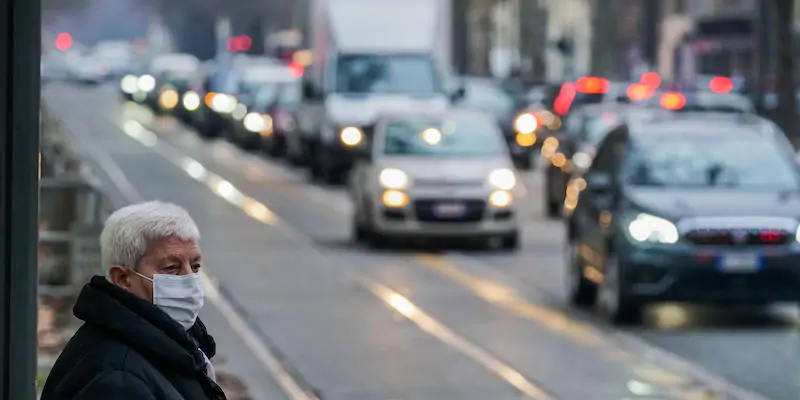Loading player
Every day, due to human activities, numerous substances are dispersed into the atmosphere. Some, such as carbon dioxide (CO2), are the cause of global warming. Others have no particular effect on the climate, but are harmful to health. For this reason, since 1987 the World Health Organization (WHO) periodically publishes guidelines on the presence of certain substances in the air we breathe, setting recommended maximum levels.
On 22 September it updated them, in many cases lowering them compared to 2005, and the European Commission said it will review its limits next year to take this into account. For this reason, an even greater effort will be required of Italy, which often has not respected European rules on air quality, urged by numerous organizations of Italian doctors.
The new WHO guidelines take into account more than 500 studies done since 2005 on the health effects of the main pollutants in the atmosphere, which are estimated to cause the premature death of 7 million people each year. The substances in question are six well-known air pollutants: particulate matter (PM10), fine particles (PM2,5), l’ozono (O3), nitrogen dioxide (NO2), sulfur dioxide (SO2) and carbon monoxide (CO).
Particulates are the set of substances – solid and liquid – which are suspended in the air in agglomerates with a diameter of up to half a millimeter and are the pollutants to which we must pay more attention because they penetrate into the lungs (PM2,5 reaches the blood) and have effects on the respiratory and cardiovascular systems. Since 2013, the WHO International Agency for Research on Cancer (IARC) has included them on the list of carcinogenic substances.
Even NO2 it is considered carcinogenic and can be harmful to the respiratory system; the same applies to the O3, among the most risky substances for asthma sufferers. In Italy, the current legal limits for all these substances were set with a legislative decree in 2010, which transposed a directive of the European Union in 2008: most of them are higher than those recommended by the WHO in 2005, and again more than the new ones. For example, the European limit for the annual average concentration of fine particles is five times higher than the new WHO recommendation.
Moreover, even the current legal limits are often disregarded by many European countries, including Italy. The day before the publication of the new WHO guidelines, the European Environment Agency (EEA) announced that most member countries had breached at least one of the limits in 2019. Specifically, in 16 countries including Italy, the daily limit values for PM have been exceeded10 and in 4 countries the annual limit values for the PM2,5; in addition, the limits recommended by the WHO in 2005 have been exceeded in the vast majority of countries.
The provisional data for 2020 are better, but it must be considered that the reduced use of means of transport due to the coronavirus pandemic has contributed to temporarily reduce some sources of pollution. According to the international organization in 2019 more than 90 percent of the world population lived in areas where the concentration of PM2,5 exceeded that recommended in 2005.
Due to excessive air pollution in recent years, about a dozen European states have been brought to court for violations. Last November, the Court of Justice of the European Union established, for example, that Italy had violated the European directive on air quality, exceeding “in a systematic and continuous manner between 2008 and 2017” the limit values relating to PM10 and not taking appropriate measures to avoid it.
In June, the EEA made a ranking of European cities on air quality based on average PM levels2,5 in the previous two years and an Italian city, Cremona, was second to last out of 323. Vicenza was awarded the 320th place, Brescia and Pavia the 315th and 314th, followed a short distance away by Venice, Piacenza, Bergamo, Treviso and Milan, at 303th place; the other cities that occupy the twenty lowest places in the ranking are Polish, Bulgarian and Croatian. Also according to EEA data, in 2018 in Italy 52,300 people died prematurely – that is, in advance of what could have been estimated for the national life expectancy – due to fine particulate pollution: a number equal to 13.8 percent of all premature deaths considered related to this form of pollution in the European Union.
– Read also: Air pollution, well explained
In general, in the last decade the concentration of pollutants in the air has decreased in most of the most industrialized countries of the world, thanks to technological advances and laws such as the current European directive. However, it has increased considerably in developing countries and in fact, announcing the new guidelines, WHO Director General Tedros Adhanom Ghebreyesus recalled that air pollution mainly affects those who live in those countries.
